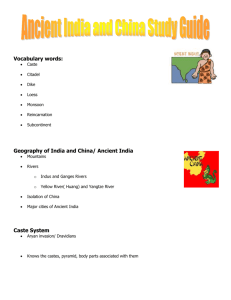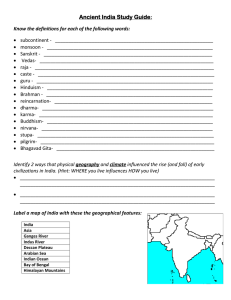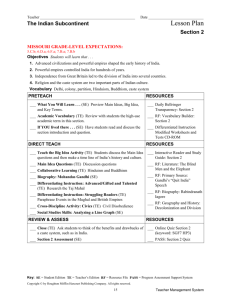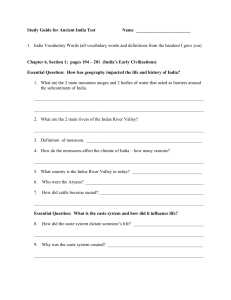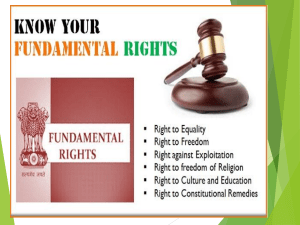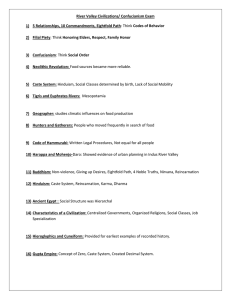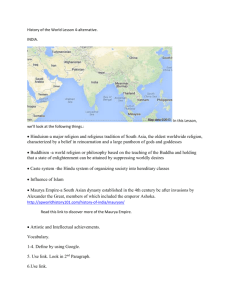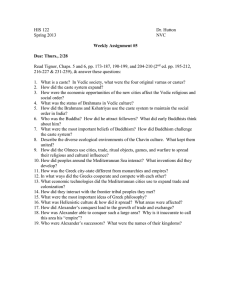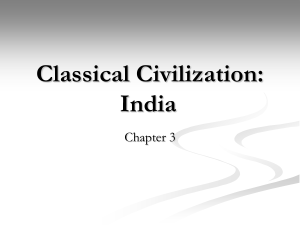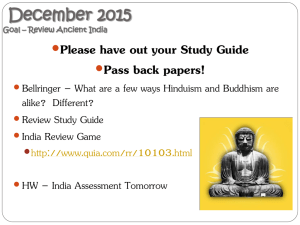2013 Indian Civilizations Lesson Plan Date your papers
advertisement
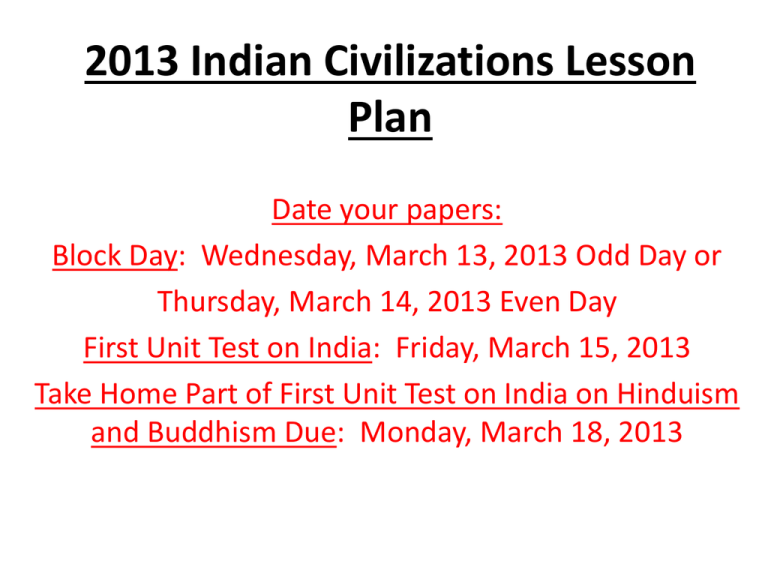
2013 Indian Civilizations Lesson Plan Date your papers: Block Day: Wednesday, March 13, 2013 Odd Day or Thursday, March 14, 2013 Even Day First Unit Test on India: Friday, March 15, 2013 Take Home Part of First Unit Test on India on Hinduism and Buddhism Due: Monday, March 18, 2013 Block • 1. Quiet Question: Type Two Prompt: Ms. Barben is going to read aloud the article below. You should follow along and highlight and make notes as she does. Then using your notes from the previous lesson on the Caste System, you are to answer the following prompt---Answer the following questions: • You MUST ANSWER A AND B! • a) What are the ongoing issues facing Dalits or Untouchables in India today? Explain why. Refer back to your notes to support your answer as well. Block • b) What additional steps do you think the Indian government has to take to fully eradicate the Caste System in India to be a true democracy? Explain your reasons for each. Refer back to your notes to support your answer as well. • You MUST CHOOSE BETWEEN ANSWERING C OR D! • c) How is the ongoing poor treatment of Dalits SIMILAR to what we learned in the Africa Unit on the legacy of Apartheid in South Africa? Give examples and explain. • d) Do you think our American social class system of upper class, upper middle class, lower middle class, working class, lower working class, welfare/poverty, etc…is any different from the lasting Caste System in India? Why or why not? Give examples to support your answer Block • 3. Class: We are going to begin to watch “Ancient India: A Journey In Time” that will cover all the main time periods of India’s history. As we watch the film, take notes in the provided timeline graphic organizer. • Political: Refers to government, heads of state like emperors, kings, presidents, making of laws, legal court system, military, wars, political rebellions, rights, and violations of rights • Economic: Refers to budget, taxes, trade, industry, agriculture, transportation, unemployment, colonies • Social: Refers to religious minorities, gender roles for men and women, family units, social classes like the caste system, nobles, clergy, middle class, tradespeople, peasants, serfs and slaves, and ethnic minorities • Cultural: Refers to the religious majority, the arts: paintings, sculptures, architecture, gardens, music and dance, communication systems like newspapers, language, books, telegraph, telephones, internet, education, healthcare, fashion, and diet Block • 4. Homework: Read the identified textbook pages and add information to the timeline. Study for Friday’s test. • Textbook Pages: • Indus Valley Civilization: Harappan and Mohenjo Dara---pages 68-69 • Aryans and Hinduism---pages 69-73 • Mauryan Empire, Buddhism and Asoka---pages 73-77 • Kushan Empire and Silk Road---pages 78, 82-83 • Gupta Empire---pages 78 “Science, Technology, and Society”-81 • Eastward Expansion of Islam and Moguls/Mughals---pages 285-289, 498-502 Block • Friday, March 15: First Unit Test on India covering Geography, Religions, and Caste System • Monday, March 18: Comparing Hinduism and Buddhism Take Home Part of Test Due
